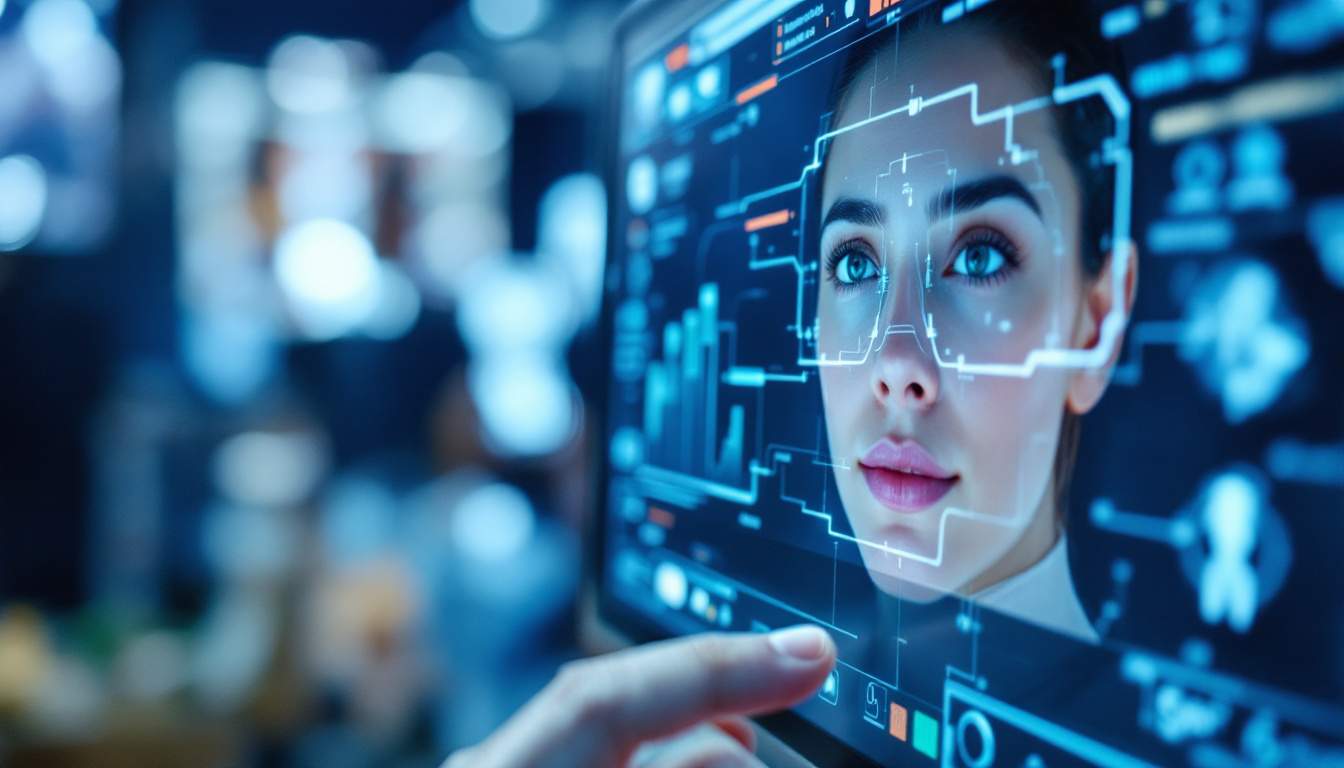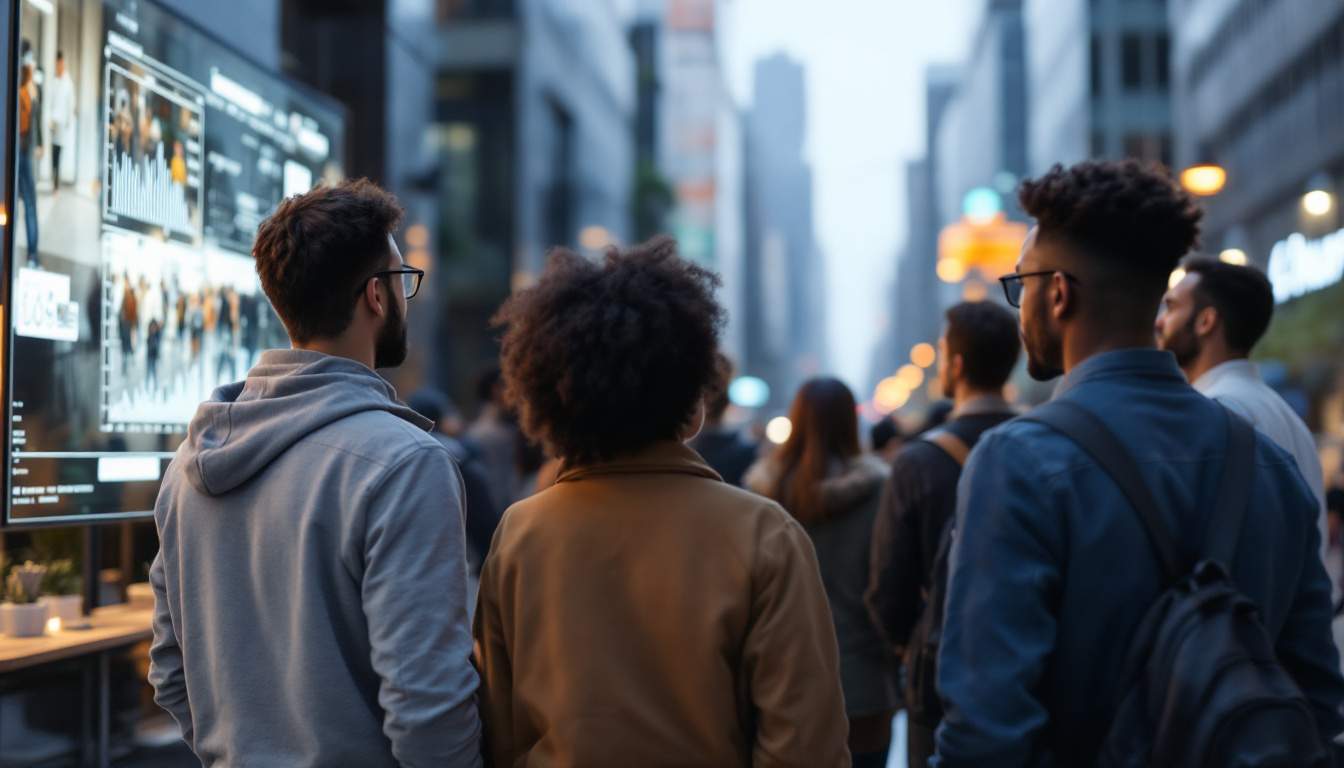Facial Recognition: AI Video Analytics Explained
Facial recognition is a subset of AI Video Analytics that focuses on identifying or verifying a person's identity using their facial features. This technology has been widely adopted in various sectors, including security, retail, and social media, due to its ability to provide accurate and fast results.
AI Video Analytics, on the other hand, is a broader field that encompasses the use of artificial intelligence to analyze video content. It involves the extraction of meaningful information from video data, which can be used for various purposes such as surveillance, behavior analysis, and content moderation.
Understanding Facial Recognition
Facial recognition is a biometric technology that uses unique features on a person's face to identify them. It works by comparing selected facial features from a given image with faces within a database. It is typically used in security systems and has been recently gaining popularity in other areas of technology and business.

Facial recognition technology operates on the principle of biometrics. Biometrics refers to the measurement and statistical analysis of a person's physical and behavioral characteristics. In the context of facial recognition, these characteristics are the unique features of a person's face, such as the distance between the eyes or the shape of the cheekbones.
How Facial Recognition Works
Facial recognition systems capture, analyze, and compare patterns based on a person's facial details. The process begins with a picture being taken of your face, which might be captured from a photo or video. The system then identifies your face and ignores everything else in the picture, such as the background.
Next, the system measures your facial features to create a numerical code, known as a faceprint. This faceprint is unique to you and is used to compare with the faceprints stored in the facial recognition system's database. If your faceprint matches an existing one in the database, the system confirms your identity.
Applications of Facial Recognition
Facial recognition technology has a wide range of applications, from security and law enforcement to social media and marketing. In security, facial recognition can be used for access control in buildings and to identify individuals in crowds. In law enforcement, it can help identify suspects and find missing persons.
In the social media realm, facial recognition is used to tag and identify people in photos. In marketing, it can be used to measure how people react to advertisements or products, providing valuable data for businesses. Additionally, facial recognition is also used in personal devices such as smartphones for features like unlocking the device or authorizing payments.
AI Video Analytics: An Overview
AI Video Analytics is a technology that uses artificial intelligence to analyze video content. It can identify and classify objects, people, behaviors, and events in videos, making it possible to extract meaningful insights from large amounts of video data.

This technology is particularly useful in surveillance, where it can help detect suspicious activities or behaviors. It can also be used in retail to track customer movements and behavior, in traffic management to monitor road conditions, and in healthcare to monitor patient behavior and safety.
Components of AI Video Analytics
AI Video Analytics systems typically consist of several components. The first is the video data source, which can be any device that captures video, such as a CCTV camera or a smartphone. The video data is then sent to a video analytics system, which analyzes the data using artificial intelligence algorithms.
The AI algorithms used in video analytics can vary depending on the specific application. Some common types include object detection algorithms, which identify objects in a video, and behavior analysis algorithms, which analyze the behavior of people or objects in the video. Once the video data has been analyzed, the results can be presented in a variety of ways, such as in a report or a real-time alert.
Applications of AI Video Analytics
AI Video Analytics has a wide range of applications across various industries. In the security industry, it can be used to detect suspicious activities, track individuals, and recognize license plates. In retail, it can help track customer movements, analyze customer behavior, and manage inventory.
In the transportation industry, AI Video Analytics can be used to monitor traffic conditions, detect accidents, and manage parking. In healthcare, it can help monitor patient behavior, detect falls, and ensure patient safety. Other applications include sports analytics, wildlife monitoring, and content moderation.
Challenges and Ethical Considerations
While facial recognition and AI Video Analytics offer numerous benefits, they also present several challenges and ethical considerations. One of the main challenges is the accuracy of these technologies. Factors such as lighting, camera quality, and the angle at which the face is captured can affect the accuracy of facial recognition systems.

Moreover, there are concerns about the potential misuse of these technologies. For instance, there are fears that facial recognition could be used for mass surveillance, leading to privacy violations. Similarly, AI Video Analytics could be used to monitor individuals without their consent, raising ethical and privacy concerns.
Addressing the Challenges
To address these challenges, several measures can be taken. For instance, improving the quality of the cameras and the algorithms used can enhance the accuracy of these technologies. Additionally, implementing robust data protection measures can help prevent the misuse of the data collected by these systems.
Furthermore, regulations and guidelines can be established to govern the use of these technologies. These regulations could stipulate how and when these technologies can be used, who can use them, and how the data collected should be handled.
Ethical Considerations
When using facial recognition and AI Video Analytics, it's important to consider the ethical implications. These technologies should be used responsibly, with respect for individuals' privacy and rights. This includes obtaining consent where necessary, being transparent about how the technology is used, and ensuring that the technology is not used for discriminatory or harmful purposes.
Moreover, it's important to consider the potential impact of these technologies on society. For instance, the widespread use of facial recognition could lead to a society where individuals are constantly being watched and monitored, which could have profound implications for privacy and freedom. Therefore, it's crucial to have a balanced approach that considers both the benefits and potential drawbacks of these technologies.
Future of Facial Recognition and AI Video Analytics
The future of facial recognition and AI Video Analytics looks promising, with advancements in technology expected to enhance the capabilities of these systems. For instance, improvements in AI algorithms could lead to more accurate and efficient systems. Additionally, the integration of these technologies with other systems, such as IoT devices, could open up new possibilities for applications.
However, as these technologies continue to evolve, it's important to ensure that they are used responsibly and ethically. This will require ongoing dialogue and collaboration between technologists, policymakers, and society at large. By working together, we can harness the benefits of these technologies while mitigating their potential risks.


